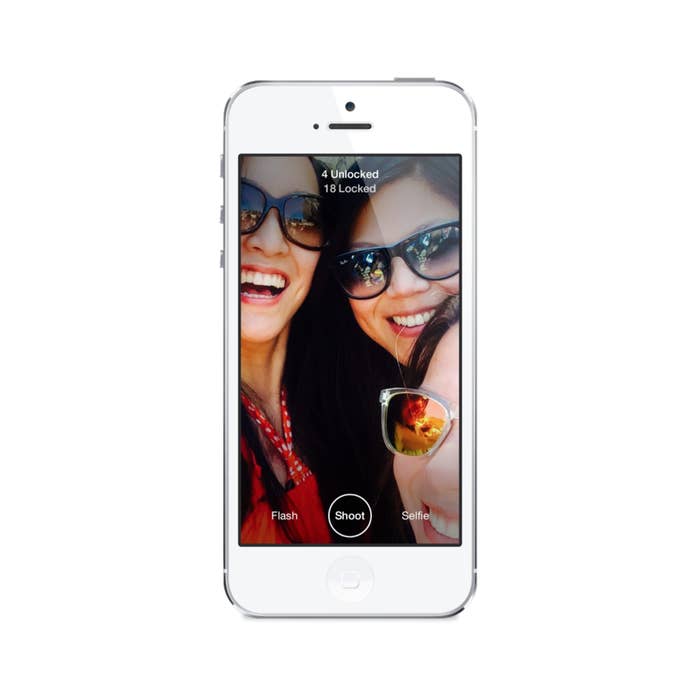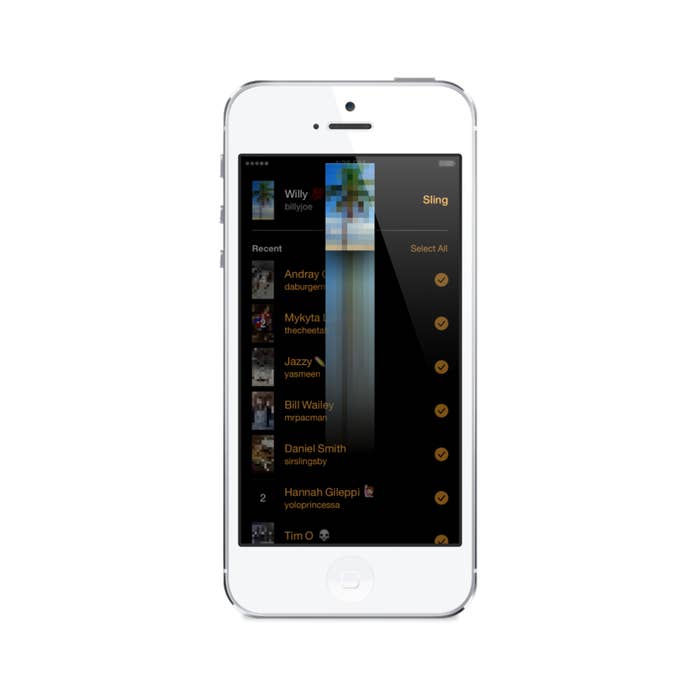
The collective internet will finally be able to download a new photo-sharing application from Facebook that leaked to the web last week.
The question, however, is whether they will want to give Facebook's second attempt at a disappearing photo app — that's not quite like Snapchat — a chance, given that it requires its users to take photos in order to see photos.
Facebook's new photo application Slingshot — which doesn't actually require its users to use their Facebook accounts — requires its users to first "sling" a "shot" to other users. Only then will the sender be able to see photos they have received from that other user, and after opening the photos they are gone forever.
The core of the application centers around what Facebook likes to dub "reciprocation," which essentially boils down to a quasi-social pressure that lowers the emotional and physical barrier to sharing a photo given the ephemeral and rapid nature of the photos. If it sounds familiar, it should, because that is part of the core appeal of Snapchat, an application that Facebook sought to acquire for reported $3 billion in cash.
Still, the Slingshot team argues this is a different approach, considering that the photos disappear after viewing, and there is no time limit to how long they can be viewed. Many investors also put Snapchat in the same bucket as WhatsApp when looking for comparable companies, treating it as a medium for communication — which Facebook says Slingshot is not. (Snapchat, too, has a messaging component built into its most recent version.)
"This isn't a messaging app, it's really, 'Whenever I'm ready to share something I have stuff waiting for me,'" Slingshot engineering lead Rocky Smith told BuzzFeed. "The shot represents a moment in time. The time, the location, whatever it is you're doing, you're sharing it. It's a more raw look into people's lives. You've got a collection of these moments with all your friends in chronological order; it's almost like reliving their weekend or what you've missed."
The risk to an application like Slingshot is whether it is susceptible to an internet rule of thumb that is loosely referred to as the 90-9-1 rule: that 90% of an online community are essentially observers, while 9% are curators and editors, leaving only 1% of the community as actual content creators. Facebook Product Manager Will Ruben said Slingshot is an attempt to essentially defy that rule and create a community where 100% of its members are "creators."
"We think it's 90-9-1 right now because nothing is like this. We want to flip that on its head," he said in an interview with BuzzFeed. "In an app where everyone creates, it creates this OK-ness around creation. 90-9-1 exists because there's no network that supports 100% of the user base. When I send something to Rocky it's not like send me back some huge, momentous thing, it's like, what are you up to?"
Slingshot users can sign up with a user name instead of connecting their Facebook accounts, and, like other more modern communications applications, find their friends by using their phone numbers. The photos are also listed in chronological order as they arrive, without the kind of intelligent sorting that Facebook applies to its News Feed.

While Snapchat has a decidedly simple appeal to it, Slingshot has all the feeling of one of Facebook's high-designed applications like Paper, with slick transitions and animations. The app was born out of Facebook's December hackathon, which spawned a number of stand-alone applications like Paper that became part of its "Creative Labs" initiative. Like many of Facebook's applications, it was tested extensively internally before rolling out today.
"It really made people feel close together," Slingshot designer Joey Flynn told BuzzFeed. "When we used it among ourselves, more broadly in Facebook, people really loved using it. They got windows into other people's lives."
Still, given that Facebook tests its products extensively among its user base and is constantly tweaking the application, Flynn wouldn't rule out relaxing or restricting the rules around photo sharing in order to view inbound photos.
"We would consider anything because we want to build the right product, but internally that's what we love the most about it," he said. "That's the heart and soul of Slingshot: You share with a lot of people and you unlock photos."
